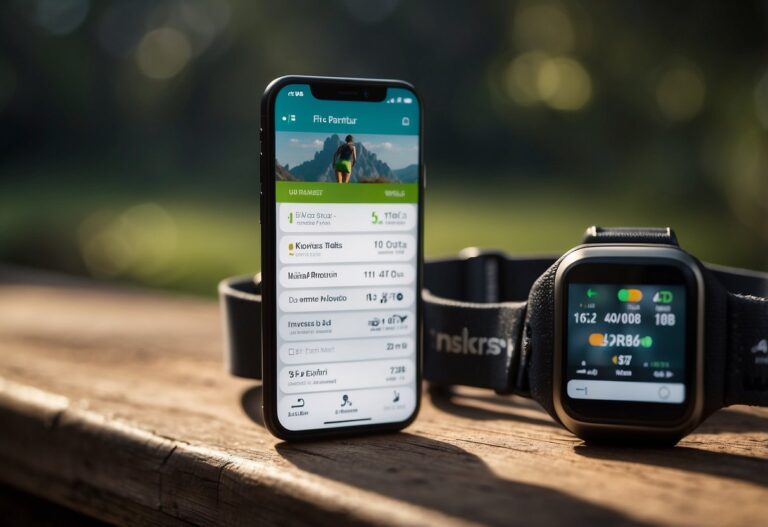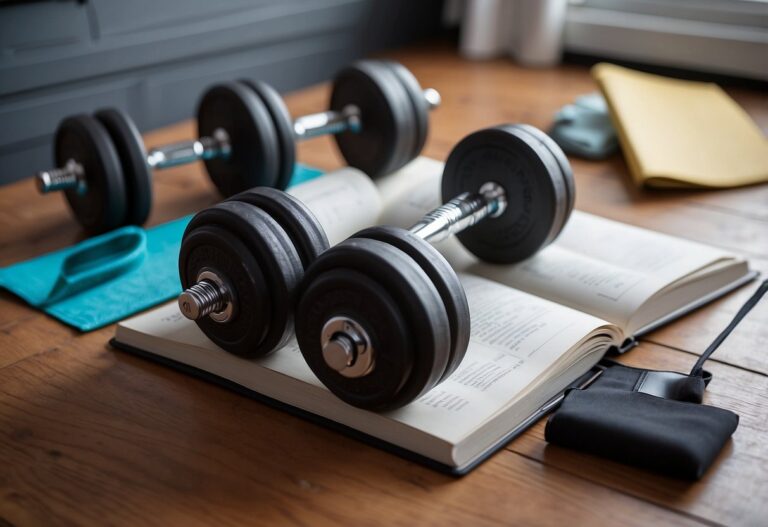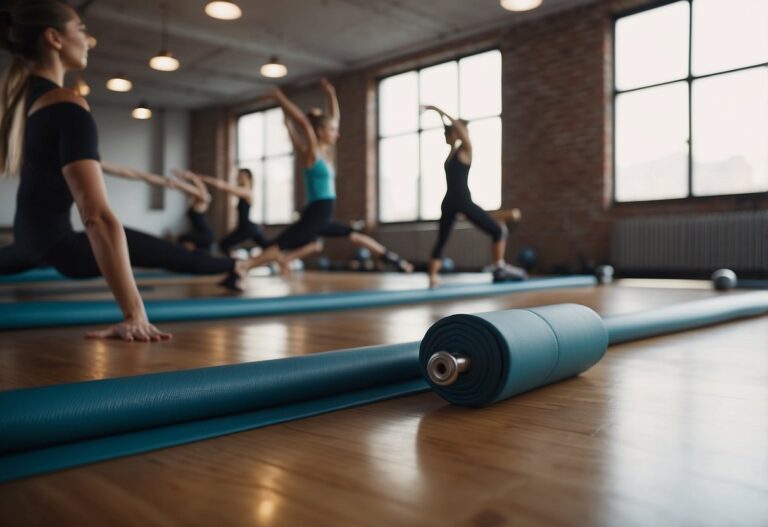Running is a fantastic way to stay fit, but knowing what to do after your workout is just as important as the run itself. Post-run routines can help your body recover faster and more effectively, making sure you stay strong and healthy. What are the best tips to boost your recovery after a run?

In this article, you’ll find useful advice to make your recovery easier and more efficient. With the right tips, you’ll be back on your feet and ready for your next run in no time. Whether you’re a beginner or a seasoned runner, these suggestions can help anyone looking to improve their post-run routine.
Hydrate Correctly
Staying hydrated is key after a workout. When you run, you lose fluids through sweat. Replacing these fluids is crucial.
One way to check your fluid loss is by weighing yourself before and after your run. The difference gives you an idea of how much water you need to replace. This method ensures you don’t under or overhydrate.
Drinking water isn’t the only option. You can also reach for sports drinks, which help replenish electrolytes lost during exercise. Electrolytes like sodium and potassium are essential for muscle function and hydration.
Carry a water bottle with you. This simple habit makes it easier to drink regularly. A water bladder can be convenient for runs longer than an hour. Remember, it’s not just about quenching your thirst but maintaining optimal body function.
Your diet also plays a role. Foods high in water content, such as fruits and vegetables, can aid in keeping you hydrated. Watermelon and cucumbers are great examples.
Useful Links:
Cool Down Properly
After finishing your run, cooling down is essential. This helps your body transition back to a resting state. Start by gradually reducing your pace to a walk. Walking helps prevent blood from pooling in your legs.
Next, incorporate stretching. Hold each stretch for 20-30 seconds. Stretch your major muscle groups, including your hamstrings, calves, and quadriceps.
Consider doing light exercises like lunges or squats. These movements can keep your muscles active without straining them.
Lastly, take deep breaths. Focus on relaxing and rehydrating, and you’ll feel much better soon after.
Stretch Your Muscles
After a run, it’s important to stretch your muscles to help with recovery. Start by lying on your back with one knee bent. Pull your thigh to your chest and lift your lower leg up. This will stretch your glutes and hamstrings.
Another great stretch targets your upper body. Bring one elbow across your body towards your opposite shoulder. Use your other hand to pull the elbow closer. This stretches your triceps and upper arm muscles.
Finally, try the butterfly stretch by sitting down, bending your legs, and bringing your feet together. Reach towards your feet to get a good inner thigh stretch. Holding each stretch for 30 to 60 seconds really helps.
Monitor Your Heart Rate
Keeping an eye on your heart rate is key after a workout. Using a heart rate monitor can help you understand how hard you worked and how well you are recovering.
In the first few minutes after your workout, pay attention to your heart rate. This is when your heart should start to slow down.
Your heart rate can tell you a lot about your fitness level. For example, a quicker return to a lower heart rate can be a sign of good fitness. By monitoring this, you can track your progress over time.
Consider using a device or an app to make this easier. Many runners use these tools to stay on top of their health.
Spend a few minutes reviewing your heart rate data after each session. It only takes a moment but can provide valuable insights into your training regimen. For details on using heart rate zones effectively, visit this guide to heart rate training.
Start building a habit of checking your heart rate. It can make a big difference in understanding your body’s response to exercise.
Wear Breathable Clothing

After a workout, it’s crucial to switch to breathable clothing. These garments help your body cool down and prevent you from feeling clammy or sticky.
Look for lightweight fabrics like cotton or bamboo. They let air circulate and wick away moisture effectively. Gear like a loose-fitting t-shirt or shorts can be your best friend.
In the summer, stay cool by opting for sleeveless or short-sleeved tops. If your workout makes you sweat a lot, breathable clothing is even more important.
Reflective details are also useful if you’re heading out in low light. They keep you visible and safe. Choose the right clothing to make your post-workout routine comfortable and pleasant.
Consider a Post-Run Snack
After a run, it’s important to refuel your body. A good post-run snack can help you recover faster and feel better. Look for snacks that have a mix of protein and carbohydrates.
Greek yogurt with honey and berries is a great choice. It’s tasty and helps rebuild muscles.
Chocolate milk is another favourite. It offers a balance of carbs and protein which makes it perfect after a tough workout.
A banana with peanut butter is also a quick and easy snack. The banana provides carbs while peanut butter adds protein.
Feel free to try out different options to see what works best for you.
Track Your Progress

Tracking your progress is key to staying motivated and seeing real improvement in your running routine.
Start by taking progress photos. Visually tracking your body’s transformation over time can be very encouraging. Stand in the same position and take photos regularly to compare changes.
Another method is to monitor how your clothes fit. Notice if they start to feel looser or if you need to switch to smaller sizes. This can be a clear sign of progress.
Keep a running log. Write down your distances, times, and how you felt after each run. Over weeks and months, you’ll see some big changes.
Try a benchmark run. This run checks your fitness level at different points in your training. You can then measure your progress against these benchmarks. More on this can be found here.
Pay attention to your heart rate. As you get fitter, your heart rate will be lower during runs. It’s a good indicator of ongoing improvement.
These simple steps will help you see and celebrate your progress.
Rest Between Workouts
Taking time to rest between workouts is crucial for your body’s recovery. According to experts, the body needs 36-48 hours to properly reboot after intense activities to rebuild muscles and prevent injuries. This downtime allows your muscles to heal and grow stronger.
During your rest days, focus on activities that promote relaxation. Light yoga or a gentle walk can help keep your body moving without causing strain. This way, you stay active without pushing yourself too hard.
Listening to your body is vital. If you feel unusually fatigued, giving yourself an extra day or two might be beneficial. Research shows that sometimes fatigue is delayed, becoming noticeable one or two days after the workout.
Invest in Proper Footwear
When it comes to running, investing in proper footwear is crucial. Good running shoes can help prevent injuries and make your runs more comfortable.
Visit a running store to find the best fit for your foot type. Shoes that fit well will feel snug and shape to your foot, helping it feel lighter.
Studies show that how a shoe feels is more important than many of its features. Therefore, choose shoes that feel good rather than focusing solely on specific characteristics. It’s worth the effort since quality shoes can greatly impact your running experience and overall well-being.
Join a Running Group
Joining a running group can be a brilliant way to stay motivated. You’re surrounded by people who share your interest in running. This can make your workouts more enjoyable and less of a chore.
Running with a group also introduces you to new routes and techniques. The group’s schedule can help keep you consistent. Some suggest having set running days, like Tuesday and Saturday.
Being part of a group can ease social anxiety too. You’ll meet new friends and gain support from others. This can be especially beneficial if you find it hard to socialise normally.
Participating in group runs can also boost your running performance. You’ll often find you push yourself harder and run faster. It can be quite a shift from running alone to achieving new personal bests.
Finally, joining a group provides that extra push to get out the door. When you know others are waiting for you, skipping a run becomes less tempting. It’s a great way to make sure you stick to your running goals.
Importance Of Post-Workout Recovery
Post-workout recovery is essential for building muscle, preventing injuries, and improving performance. Proper recovery allows your muscles to heal and grow, ensuring you stay fit and healthy.
Understanding Muscle Recovery
When you exercise, your muscle fibres experience tiny tears. This is a normal part of the muscle-building process. After your workout, your body needs time to repair these tears, which helps your muscles grow stronger and more resilient.
Giving your body enough time to rest is crucial. Heavy lifting or intense runs require anywhere between 24 to 72 hours of rest for muscle recovery. Factors like nutrition, hydration, and sleep play key roles in this process. Eating a balanced diet, staying hydrated, and getting enough quality sleep are vital. During sleep, your body releases growth hormones that aid in muscle repair and growth.
To improve muscle recovery, consider activities like stretching, foam rolling, or low-intensity exercises. These activities can boost blood flow to your muscles, which speeds up the healing process. Remember, without proper recovery, you increase your risk of injury and burnout.
Benefits Of Running After Workouts
Running after a workout, especially at a low intensity, can be beneficial for recovery. Engaging in a light jog or a relaxed run helps flush out lactic acid and other metabolic waste products that accumulate in your muscles during intensive exercise.
This kind of active recovery reduces muscle stiffness and soreness, making it easier to get back into your routine. Active recovery workouts like gentle running, walking, or cycling also stimulate blood flow, delivering more oxygen and nutrients to your muscles. This speeds up the repair process and reduces recovery time.
Additionally, these light exercises help maintain your cardiovascular fitness without straining your muscles too much. By incorporating a short, easy run into your post-workout routine, you can stay active while giving your muscles the recovery they need. This balanced approach ensures you keep progressing without overtraining.
Optimal Timing For Running After Workouts

Finding the right time to run after your workout can enhance both your performance and recovery. Timing your run depends on your overall fitness goals and how well your body responds to different recovery times.
Short Rest Periods
Running soon after a workout can be beneficial if you aim to build endurance. Keeping the rest periods short, usually around 30 minutes to 1 hour, helps keep your muscles warmed up. This approach is best for those whose bodies can handle continuous activity without much fatigue.
Short rest periods are also suitable for limiting lactic acid buildup. Stretching right after your workout and before your run can reduce muscle stiffness and make the run more pleasant.
Remember to hydrate well and have a light snack rich in protein and carbohydrates. This helps to fuel your body and maintain your energy levels. Overall, short rest periods are great for high-intensity sessions if you’re physically prepared.
Extended Recovery Times
If you’re planning a more intense run, giving your body more time to recover can be crucial. Extended recovery times range from a few hours to a full day. This allows your muscles to repair and reduces the risk of injury.
Running after an extended recovery period can help improve speed and performance. Your body will have time to replenish energy stores, making the run feel easier and more efficient.
This approach can be more suitable if you’re targeting muscle gains or preparing for a major event. It also allows you to focus on other recovery techniques, such as foam rolling and proper nutrition.
Extended recovery times are ideal for those who prefer to run with maximum energy and minimal discomfort. Consider this option if you want to push your limits safely and effectively.







